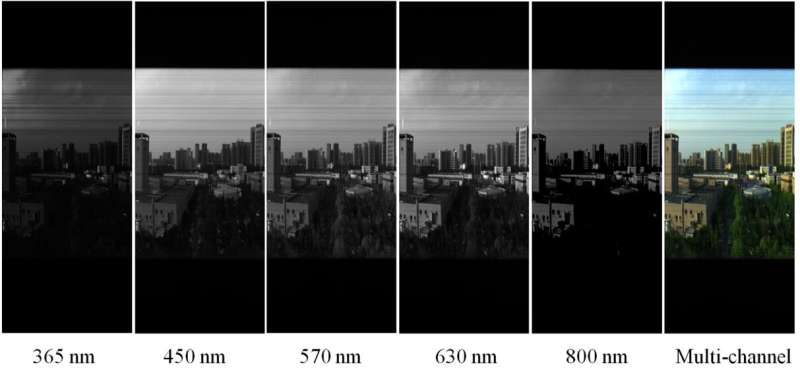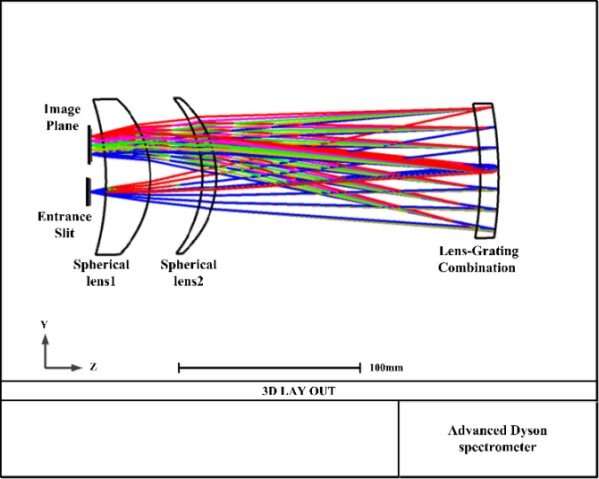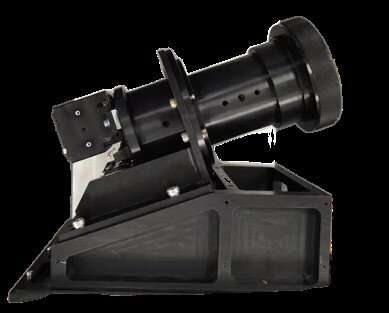Results of imaging using prototype at different wavelength. Credit: Wu Su
Ocean color is hard to observe, as water scatters sunlight and only visible light can be transmitted. As water deepens, the intensity of light transmitted through the water decreases. Traditional concentric system spectrometers, with broad spectrum and high spectral and spatial resolution, can meet part of the observation requirements. However, the Dyson structure is hard to process and assemble due to the short distance between slit and detector.
A team led by Prof. Yu Lei from the Hefei Institutes of Physical Science of the Chinese Academy of Sciences (CAS) recently designed an imaging spectrometer for ocean color observation with improved Dyson design, which is easier to process and assemble. This work was published in Optics Express and Applied Optics, respectively.
In this study, the team provides a solution for this dilemma of traditional spectrometers. They re-derived an advanced Dyson quasi-concentric spectrometer by giving the slit a perpendicular distance from the optical axis, which ensures a reasonable distance between the imaging surface and the optical axis of the system.
In their design, a reasonable distance was also provided between the slit and the detector in the axial direction, without sacrificing high imaging quality. Furthermore, they proved that the new Dyson spectrometer structure has high optical performance and good engineering applicability in the final prototype test.
-
Optical system and prototype for advanced Dyson spectrometer. Credit: Wu Su
-
Optical system and prototype for advanced Dyson spectrometer. Credit: Wu Su
More information: Tao Wang et al, Coastal shallow waters explorer imaging spectrometer for aerial remote sensing of shallow waters in UV-VIS-NIR broadband, Applied Optics (2021). DOI: 10.1364/AO.418165
Su Wu et al, Optical design and evaluation of an advanced scanning Dyson imaging spectrometer for ocean color, Optics Express (2021). DOI: 10.1364/OE.440840
Journal information: Optics Express
Provided by Chinese Academy of Sciences


























